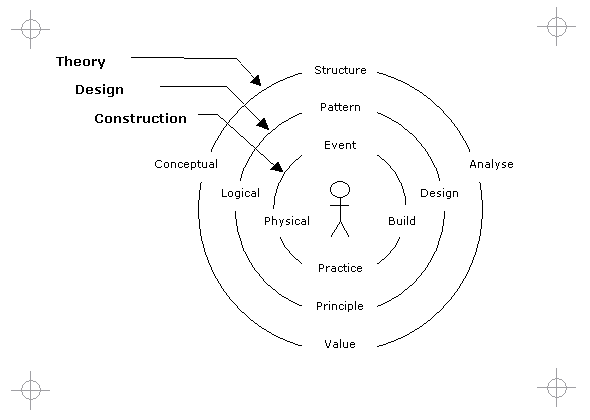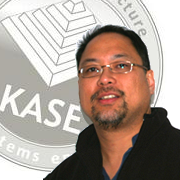You'll be forgiven for thinking this is an article written by an Afrikaaner. But I'm not an Afrikaaner in any shape or form and what I want to articulate is about the value of family. In social architecture, the family is a unit of construction. Build strong families and you can build strong communities.
Centuries of slavery and decades of apartheid have contributed to the destruction of the African family unit. And it saddens me that there is very little effort to re-build it when it is clearly at the centre of our social issues. Gangsterism and crime is a symptom of the lack of a family structure and in particular lack of stronger male role models. The fact that so many women have become both the patriarchs and matriarchs in our extended families as single mothers and grandmothers should inform us that we need to focus on the family unit.
Yet post 1994, the South African government has placed greater emphasis on black economic empowerment (BEE) and gender equality as a solution. BEE and gender equity is important but these should be driven by an over-arching strategy on families as a basic unit. And this notion of family should not be limited to a father and mother with children but should include all forms. In fact, there should be a culture in our country where families are encouraged to reach out and welcome into their households other families and individuals that have less.
It is my belief, and I am just putting the idea out there, that racism was not the main driver for the social architecture of apartheid. I believe that the concept of family is what drove and continues to drive Afrikanerdom and that apartheid was a product of theology and fear for the destruction of the family. You can call it the "Kraal" mentality or refer to the Boer War and how the British put Afrikaans women and children in concentration camps.
What comes to mind for me is the Goshenites. They were an Afrikaans community living in what is now the North West Province of South Africa. At the time they lived in a patch of land that was sandwiched between Bechuanaland or the Tswanas and the Transvaal. They called the land Goshen after a strip of land between Egypt and the promised land occupied by Canaanites. I think if you placed them anywhere in the world, they would have regarded everyone around them as Canaanites.
The apartheid government used their powers to secure all major sectors of the economy by establishing state owned enterprises or major companies in the hands of Afrikaaners. Telkom ran telecommunications, Eskom the energy sector, Transnet the transport, Naspers, Sanlam, etc - they all served one common purpose under apartheid. By ensuring that every white male could have a job, even in the post office or railways, every Afrikaans family had a bread winner and even the weakest family in the Afrikaans society was still better off than the families of the larger majority groups.
By limiting the options and using black Africans to provide the labour force in industries such as mining, the system worked both ends. Black workers had little or no option but to live in "homelands" and migrate into cities and towns hundreds of kilometres away. The system displaced families, creating weak household units. When you consider how well structured this system was in supporting strong minority families, it seems inconceivable that we have not established a strong national program on family post 1994.
So called "Coloured" communities in the Western Cape are torn by drug abuse, alcoholism, crime and gangsterism. There is a perpetual cycle of young men dying and of little boys being raised without fathers. This cycle of family breakdown occurs across South Africa in townships and rural areas. We have generations of young men ill equipped with social skills not just technical skills or knowledge. They are ill prepared for raising families and are hardly able to care for their own well being. They become frustrated and violent and perpetrate acts against those around them. There is no strong program to address this issue directly and as such no preventative and reformative education. There are no guidelines, infrastructure, resources other than general social and security agencies. Non-governmental organizations and social workers have for years been pointing this out but there has been no action.
I really am not qualified to speak about this topic, after all I don't look remotely White, Black, Coloured or Indian. What on earth am I even doing here? My parents were Filipino and my mom was of Chinese descent. They were missionary doctors who believed their medical profession was a divine calling. They loved Africa and died here. On the day, I closed my mom's clinic so I could take her with me to spend her final months fighting cancer with her family, she still was seeing HIV/AIDS patients. We were not exactly a typical family and my notions of family came from experiences of other families.
It was my mom's Chinese background that allowed me to go to school in a white-only boys boarding school. At the time, South Africa started trading with Taiwan and so I was considered an "honorary white". It was a unique privelege because it allowed me to interact with families from all backgrounds and to travel across apartheid South Africa, experiencing the incredible resilience of its people.
There are many things I love about South African families. The large muslim families eating together in a small kitchen. Kraals being swept spotlessly clean, then sitting on drums in the sand and people smiling and laughing all around you. Dancing all night in places your mother and father only read about in newspapers when someone gets killed.
It took a longer time for me to settle into the Afrikaans families but my experiences in Namibia or what was then South West Africa and under South African control helped me to change some of my pre-conceptions. The warmth and hospitality was no different from other families I had met but over the years I've grown to admire the Afrikaaner sense of family.
I've particularly enjoyed the way physical activities, hobbies and sports, are used as a centre of interaction in the family. I can understand why sports men and women are used as role models and why sports is becoming the last bastion of Afrikanerdom. Afrikaans families are breeding athletes and there is even a growing surplus that we are exporting some of South Africa's sporting talents. There are more than 80 South African players in the premier European rugby tournaments.
South Africans in their diversity are beautiful people - inside and out - they can be truly radiant. I always knew that I would end up dating or courting someone that was not of my own cultural background - whatever that was. I've been fortunate enough to go out with girls from almost every background in South Africa (in other words, I've had a high rate of rejection). But its allowed me to gain a very diverse cultural experience. I was so fond of one Afrikaans girl that I actually went to a Bless Bridges concert with her (not my proudest moment). There are worse things than Bless Bridges handing out roses or being the only guy in the room who understands that the words of the song he is singing to his wife is about another woman he loves more.
Yeah nie, I have seen some pretty nasty stuff. I spent some time in Owamboland on the northern border of Namibia with Angola at the height of the war. I still have images in my head of dead bodies tied to the side of Caspers.
In Owamboland, war divided families. There Owambo men fought on both sides - with the Cubans and Portuguese speaking Angolans north of the border and with South Africans south of the border. The Koevoets were a South African guerilla force. Each unit consisted of two white men who led a group of about 40 Owambo men. I once asked how they could fight together and was told that when an RPG rocket blows the head of someone next to you, you bond like brothers and race does not matter.
I was 21 then and not a day went by when I didn't ask myself what on earth I was doing there. My parents decided to work there and I decided to go with them to make sure they would be ok. I was studying part time, trying to make money and teaching people about the Bible. To do bible lessons, I needed to learn the local language. But I first needed to learn to speak Afrikaans just to talk to people who could translate for me.
I also helped children of some of the Portuguese speaking families I met to learn English. There was a very bright little girl who spoke fluent Afrikaans and she often translated for me. Many years later I would see her again. I'm with my two sons trying to teach them how to play basketball at the courts at the University of the Western Cape where I was lecturing. A woman walks across to greet me and she fills me in on whats been going on in her life. Its kind of surreal as I'm watching my sons play in the background but as she talks about her daughter my mind suddenly realizes how amazing this all is - that this is THAT little girl, now grown up, in her last year of study.
We are resilient and things work out. Having experienced the death of my parents, I'm constantly trying to keep my mind focused on the present and future. It is often painful to connect moments in the past and I often forget how truly priveleged I have been to experience such diversity of life in South Africa. My experiences have changed and opened up my own belief systems. I have no religion and am not selling a solution, I am just hopeful.
As South Africans we love to complain. We harp on so many things that fuel our own insecurities, anger and hate. If we don't move on, we may never really appreciate how wonderful time heals and how life intertwines such seemingly unconnected moments - the lessons of which we can't even express in words. Hating people is such a waste of time when in the last seconds of our lives and through a lifetime of confusing images, the one image we want to hold on to is of those whom we love.
South Africa can be confusing and filled with contradictions. The only thing I really know for sure is that family is important to all of us and its time to make family the main national and social agenda.




